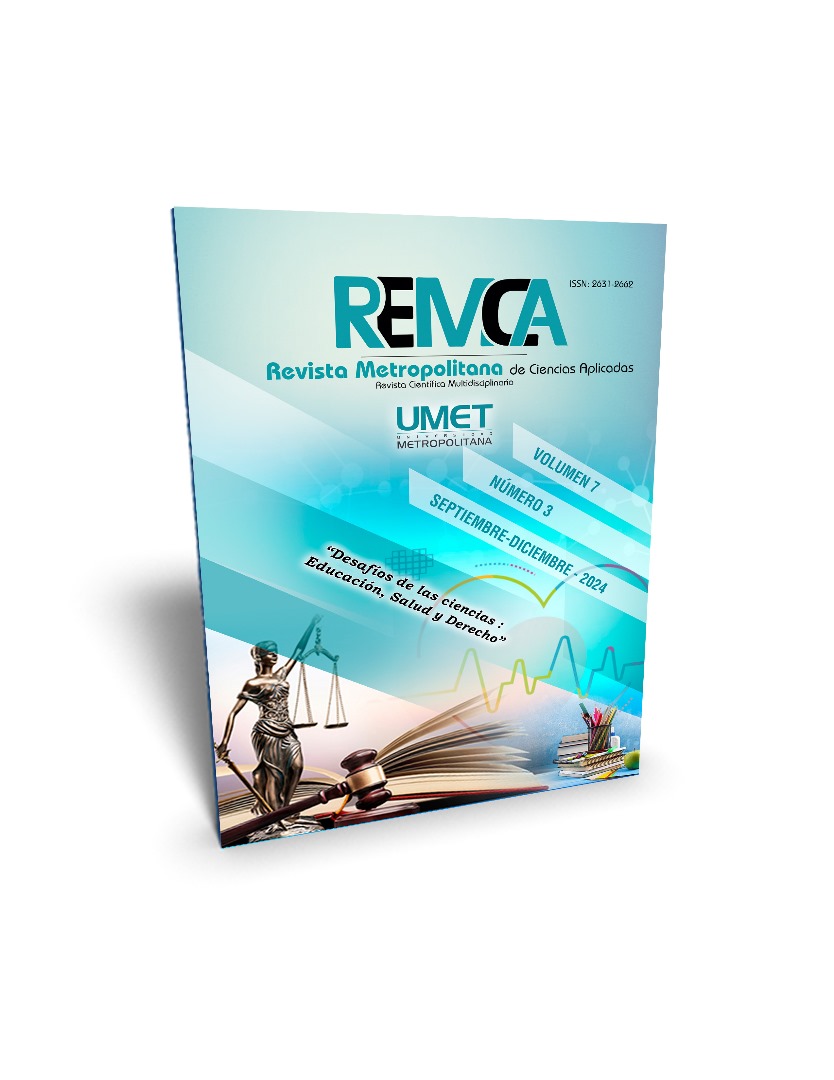El aula invertida como recurso para el trabajo en educación secundaria
DOI:
https://doi.org/10.62452/naj4nj44Keywords:
Inverted classroom, New Mexican School, transformation of reality, student feelingsAbstract
The reality of education in our country has gone through countless changes. The COVID-19 pandemic put the work methodology in a different panorama. Here are some elements that constituted the cornerstone of its action, but not only this, it was a resource that we can continue to use, although it was not new, since in the US this methodology was implemented, the inverted classroom. This resource was used in a secondary school in the state of Hidalgo with favorable results for its implementation. These elements were of great importance to corroborate its use in future practices, making clear the scope of this methodology in daily practice in secondary education. The New Mexican School (NEM) is aimed every day at transforming the reality of the student and the community, that is, solving their most pressing needs and the inverted classroom helps to a great extent to solve these needs that the student presents in order to consolidate learning in their day to day. Not only to recognize the scope of the tangible results of the methodology indicated, but also the feelings of the students regarding the use of this tool to achieve their purposes. It was of great importance to recognize the feelings of the students and thus continue with the implementation of this methodology, since, as the NEM points out, the teacher also has autonomy and his or her actions are fundamental in the education of the students.
Downloads
References
Bergmann, J., & Sams, A. (2012). Flip your classroom: Reach every student in every class every day. International society for technology in education. ASCD.
Cotrina Vento, J. C. (2022). Aplicación del aula invertida en el aprendizaje de las Ciencias Sociales con estudiantes de secundaria, Institución Pública 2032, Lima, 2021. (Tesis de maestría). Universidad César Vallejo.
Díaz Levicoy, D. (2014). TIC en Educación Superior: Ventajas y desventajas. Educación Y Tecnología, (4), 44–50. https://revistas.umce.cl/index.php/edytec/article/view/180
Fidalgo-Blanco, Á. (2020). Ventajas reales en la aplicación del método de Aula Invertida-Flipped Classroom. https://innovacioneducativa.wordpress.com/2020/01/16/ventajas-reales-en-la-aplicacion-del-metodo-de-aula-invertida-flipped-classroom/
García Berro, E., Colom Pastor, X., Martínez Solanas, E., Sallarés, J., & Roca Martín, S. (2011). La encuesta al alumnado en la evaluación de la actividad docente del profesorado. Aula Abierta, 39(3), 3-14. https://dialnet.unirioja.es/descarga/articulo/3691446.pdf
Gaviria Rodríguez, D., Arango Arango, J., Valencia Arias, A., & Bran Piedrahita, L. (2019). Percepción de la estrategia aula invertida en escenarios universitarios. Revista Mexicana de Investigación Educativa, 24(81), 593-614. https://www.scielo.org.mx/scielo.php?pid=S1405-66662019000200593&script=sci_arttext
González Zamar, M., & Abad Segura, E. (2020). El aula invertida: un desafío para la enseñanza universitaria Virtualidad, Educación y Ciencia, 20(11), 75-91. https://revistas.unc.edu.ar/index.php/vesc/article/view/27449
Hernández, H. (2013). La educación virtual en el siglo XXI. Investigación Educativa Duranguense, (13), 55-59. https://dialnet.unirioja.es/descarga/articulo/4743411.pdf
Kuess-Rosas, G. T. (2022). Aprendizaje significativo para el estudiante de secundaria, dentro del aula invertida. Revista Ciencia & Sociedad, 2(2), 163-171. http://www.cienciaysociedaduatf.sandi-ti.com/index.php/ciesocieuatf/article/view/35
Ordoñez Ocampo, B. P., Ochoa Romero, M. E., Erráez Alvarado, J. L., León González, J. L., & Espinoza Freire, E. E. (2021). Consideraciones sobre aula invertida y gamificación en el área de ciencias sociales. Revista Universidad y Sociedad, 13(3), 497-504. http://scielo.sld.cu/scielo.php?pid=S2218-36202021000300497&script=sci_arttext&tlng=en
Padilla Beltrán, J. E., Vega Rojas, P. L., & Rincón Caballero, D. A. (2017). Tendencias y dificultades para el uso de las TIC en educación superior. Entramado, 10(1), 279–295. https://revistas.unilibre.edu.co/index.php/entramado/article/view/3493
Pecina Leyva, R. (2017). Satisfacción académica del estudiante de enfermería en una Universidad Pública en México. Revista Electrónica Sobre Tecnología, Educación Y Sociedad, 4(7). https://ctes.org.mx/index.php/ctes/article/view/639
Zambrano Quiroz, D. L., & Zambrano Quiroz, M. S. (2019). Las tecnologías de la información y las comunicaciones (TICs) en la educación superior: consideraciones teóricas. REFCalE: Revista Electrónica Formación y Calidad Educativa, 7(1), 213–228. https://refcale.uleam.edu.ec/index.php/refcale/article/view/2750
Downloads
Published
Issue
Section
License
Copyright (c) 2024 Héctor Odín Hernández-Torres, Griselda González-Ordóñez (Autor/a)

This work is licensed under a Creative Commons Attribution-NonCommercial-ShareAlike 4.0 International License.
Authors who publish in Revista Metropolitana de Ciencias Aplicadas (REMCA), agree to the following terms:
1. Copyright
Authors retain unrestricted copyright to their work. Authors grant the journal the right of first publication. To this end, they assign the journal non-exclusive exploitation rights (reproduction, distribution, public communication, and transformation). Authors may enter into additional agreements for the non-exclusive distribution of the version of the work published in the journal, provided that acknowledgment of its initial publication in this journal is given.
© The authors.
2. License
The articles are published in the journal under the Creative Commons Attribution-NonCommercial-ShareAlike 4.0 International License (CC BY-NC-SA 4.0). The terms can be found at: https://creativecommons.org/licenses/by-nc-sa/4.0/deed.en
This license allows:
- Sharing: Copying and redistributing the material in any medium or format.
- Adapting: Remixing, transforming, and building upon the material.
Under the following terms:
- Attribution: You must give appropriate credit, provide a link to the license, and indicate if any changes were made. You may do this in any reasonable manner, but not in any way that suggests the licensor endorses or sponsors your use.
- NonCommercial: You may not use the material for commercial purposes.
- ShareAlike: If you remix, transform, or build upon the material, you must distribute your creation under the same license as the original work.
There are no additional restrictions. You may not apply legal terms or technological measures that legally restrict others from doing anything the license permits.




